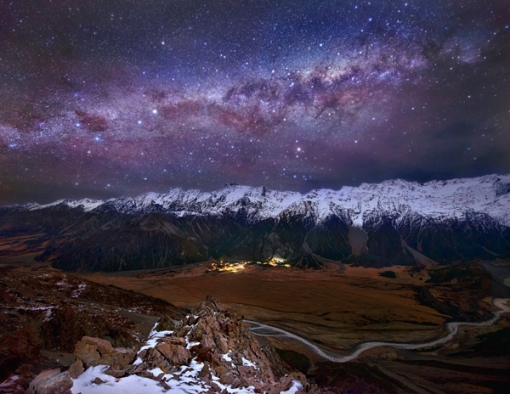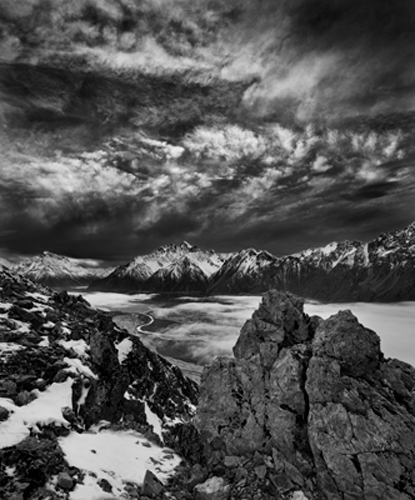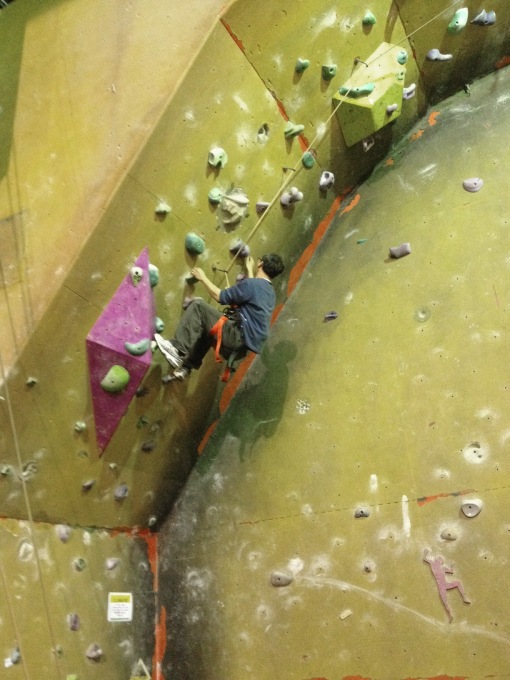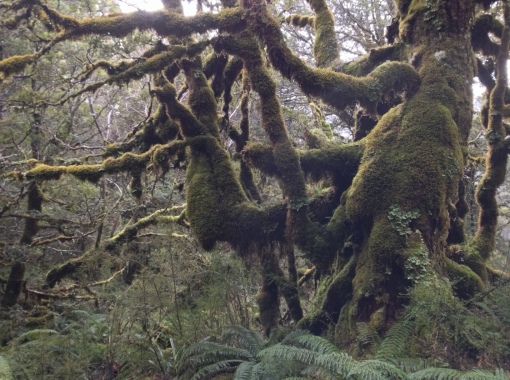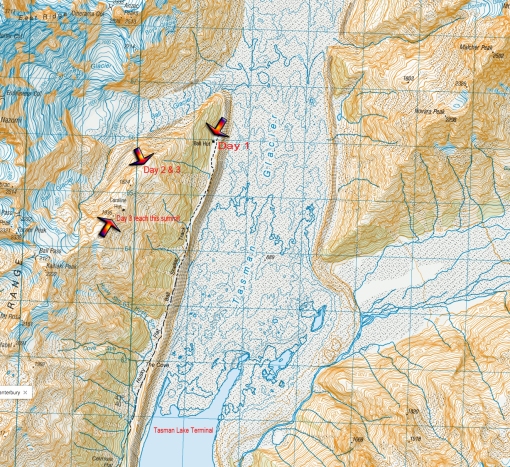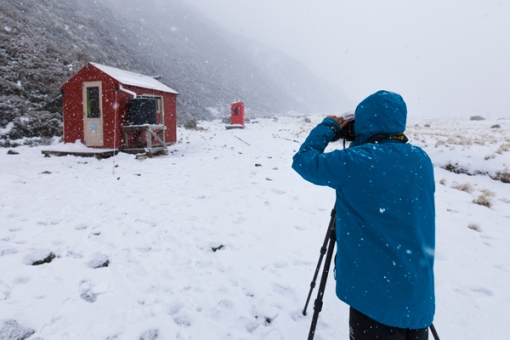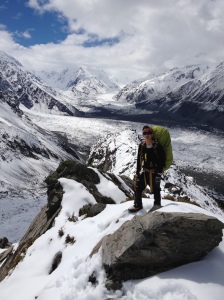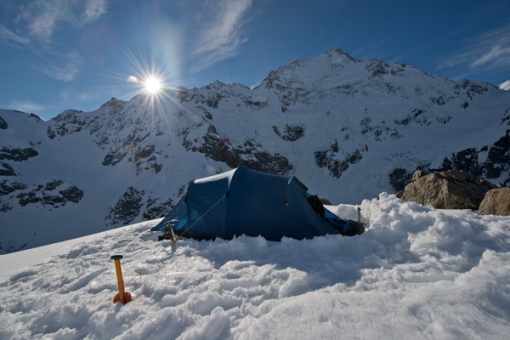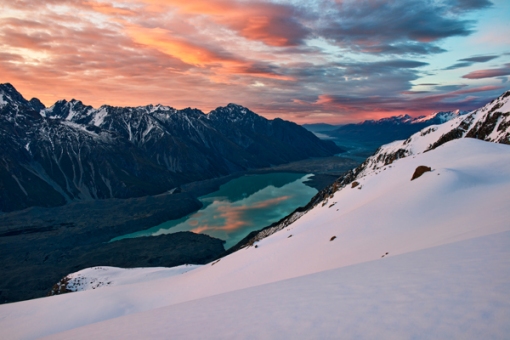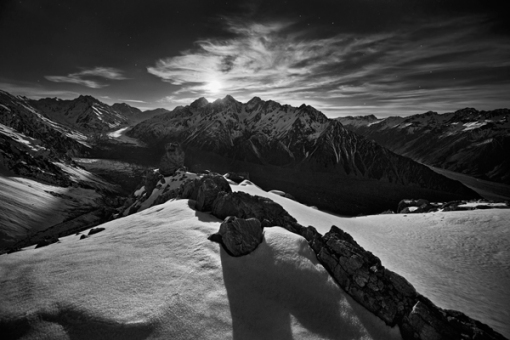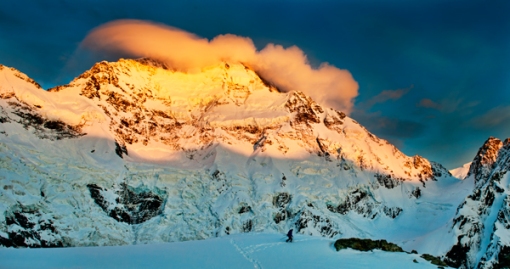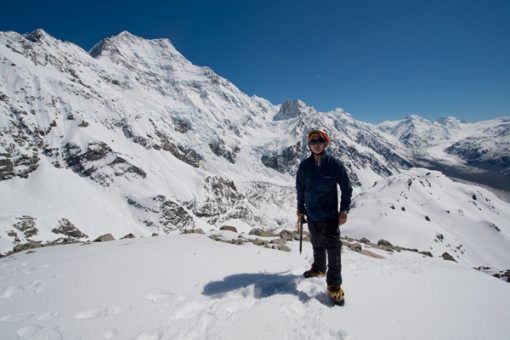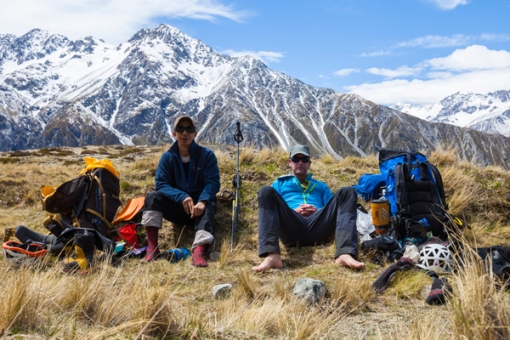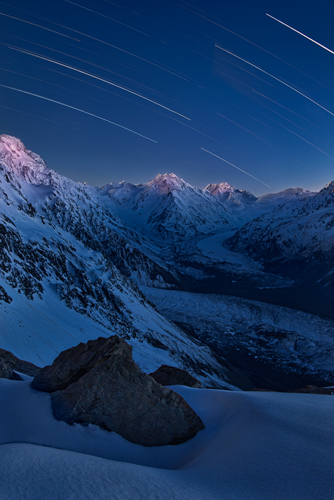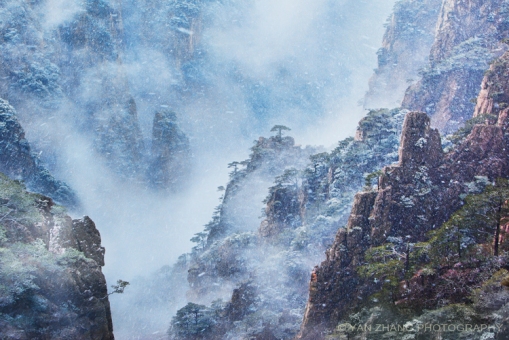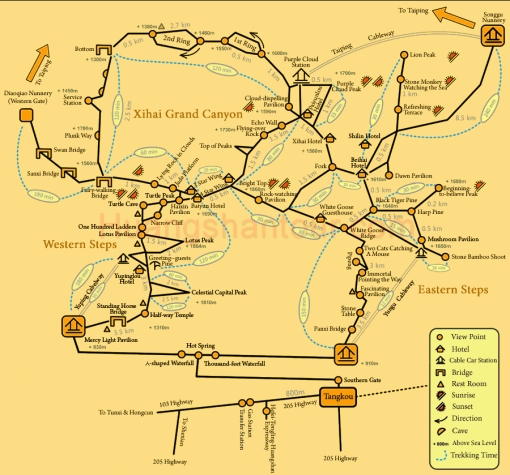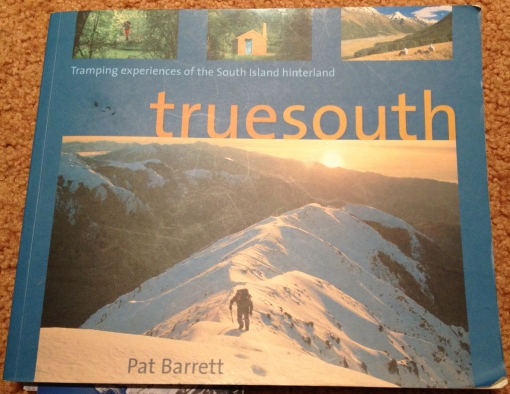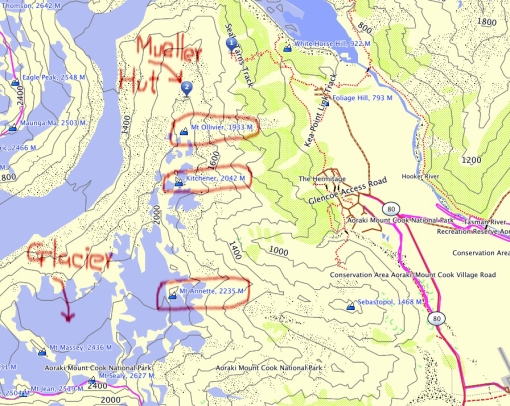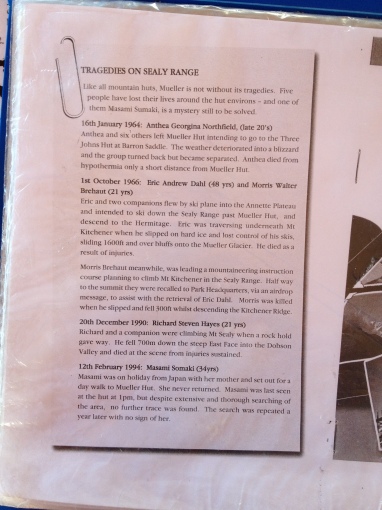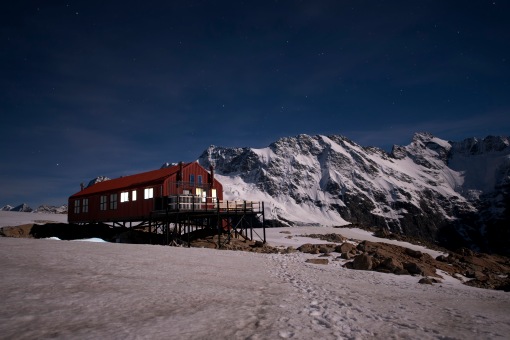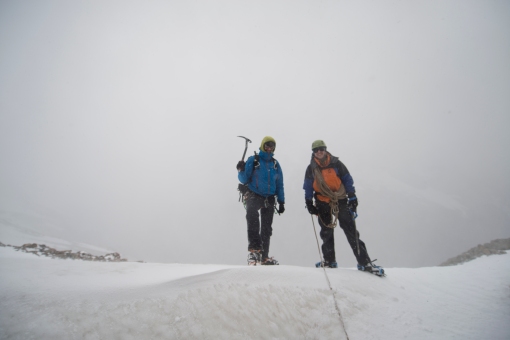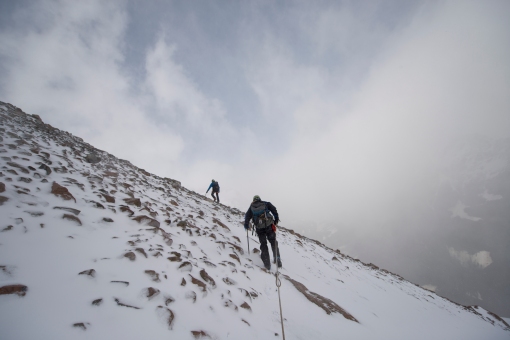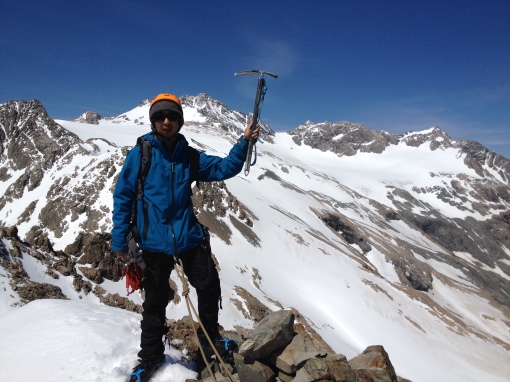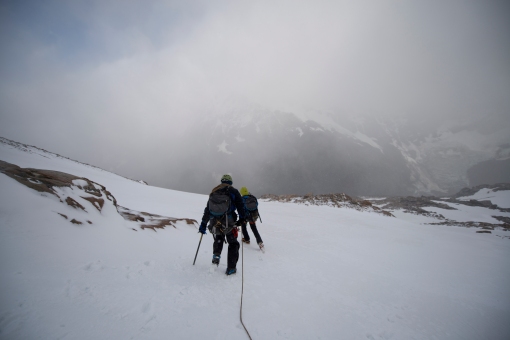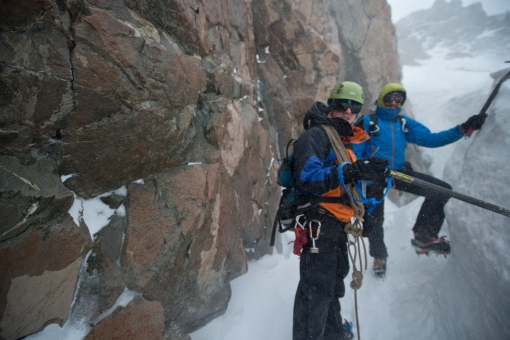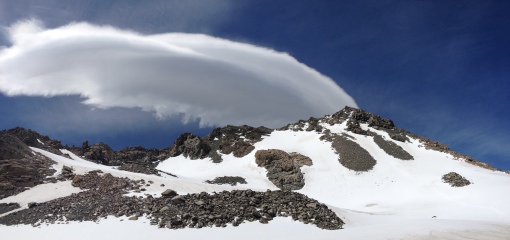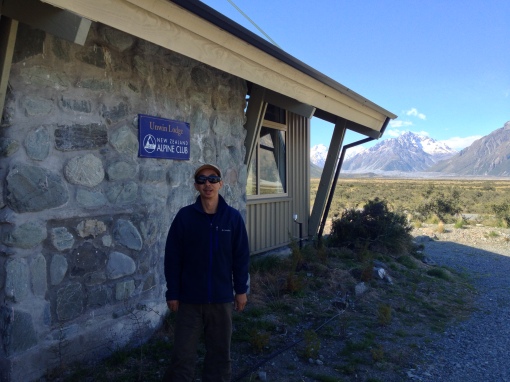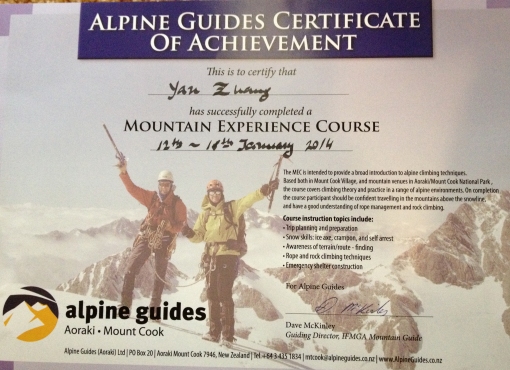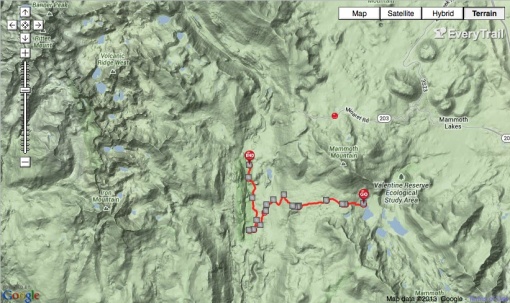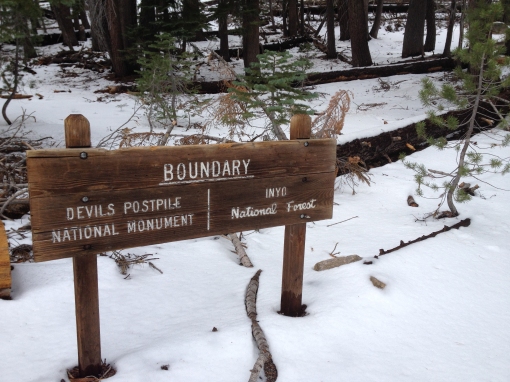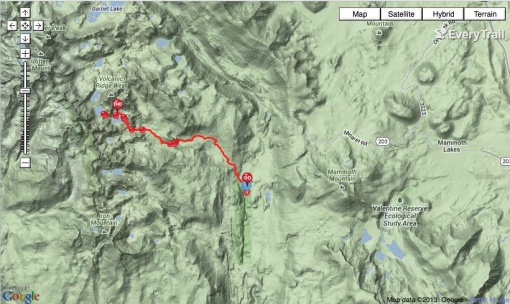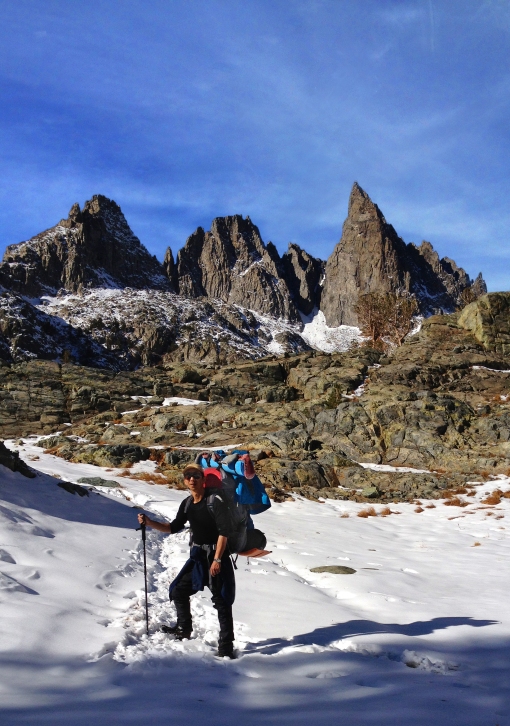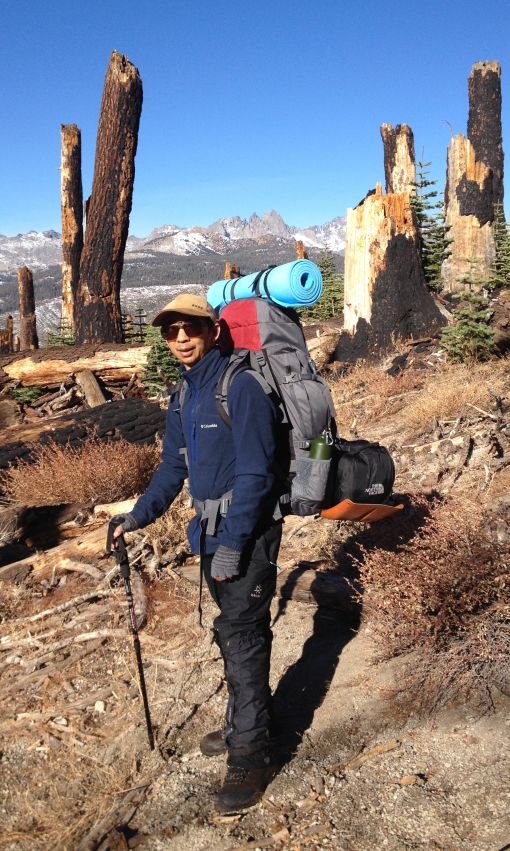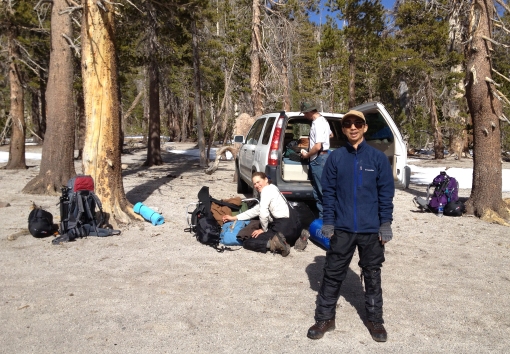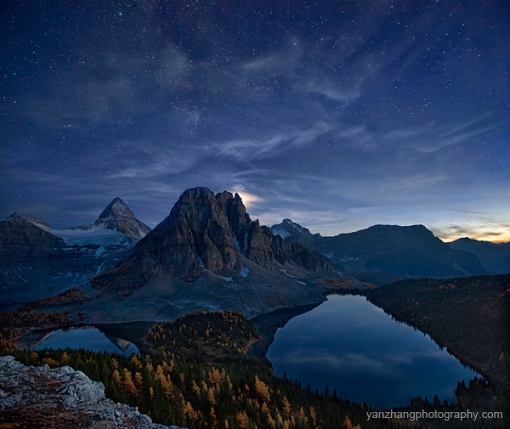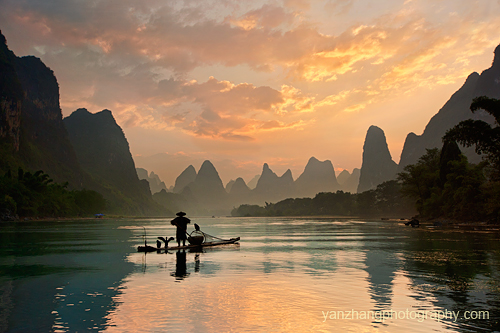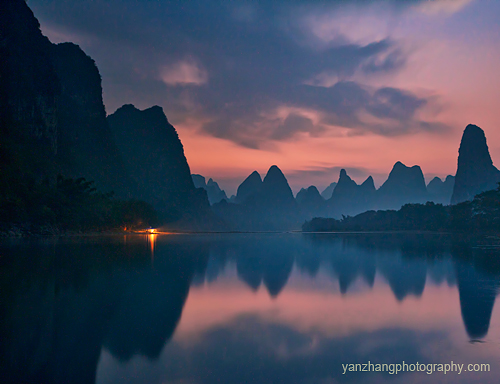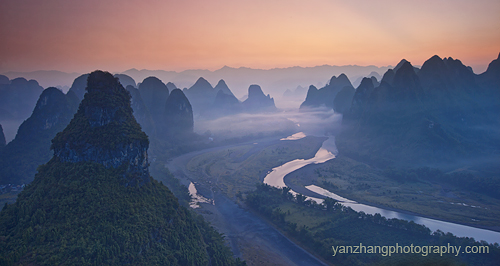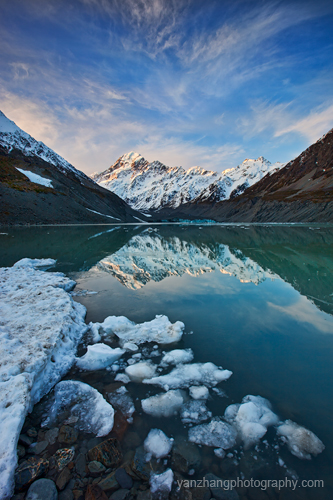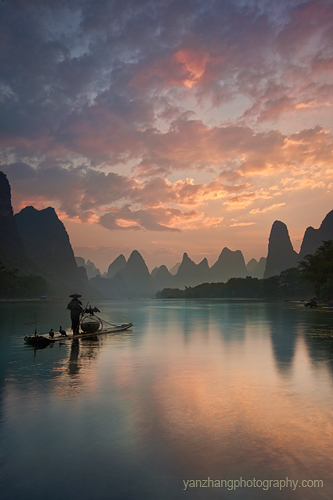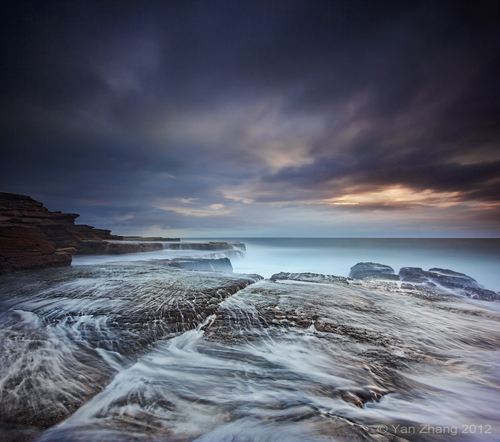This blog site has no longer been updated. Please visit my website below:
http://yanzhangphotography.com
where you can find my latest images and publications.
Please also visit me @ Instrgram yan.zhang.australia
Introduction
2014 has been a very important year for me: Since I made up my mind to go beyond the plains, I have explored the Southern Alps of New Zealand two more times after I completed my Aoraki/Mt Cook Alpine Guides’ Mountain Experience Course (MEC, see link). In July 2014, Mark – my guide and friend, and I climbed Mount Cook Range. During that trip, I was able to make couple of nice pictures. The following pictures are probably the very first serious landscape photographs made from this place, because most of current pictures of Southern Alps were taken as snapshots by climbers.
The Above photo was made on 8 July 2014, around 3.30am after moon set. From a location of 1600 meters high, we witnessed the most stunning Milky Way I have ever seen. The lights down the mountain came from Aoraki/Mt Cook Village, while the curve line in the valley was the river from Muller Glacier Lake on the very right side outside this image.
Planning
Soon after I completed our Mount Cook Range trip with Mark, I started to plan a new mountain trip in November 2014. As an experienced mountaineer, Mark suggested that we climbed Darren Mountain near Milford Sound. From the high mountain ridge of Darren Mountain, we would get stunning high views over Milford Sound and surrounding mountain scenes. Since then, for three months, I had trained myself hard in order to enhance my physical fitness as well as climbing techniques.
Yun and I arrived in Te Anau on 1 November. According to our plan, we would first undertake a 2-day backpack trip to Lake Mckenzie before our Darren Mountain climb. However, after we arrived in Te Anau, it was heavily raining. By ignoring such bad weather, we still went on our backpack trip to Lake McKenzie (12KM from the Divide on the Routeburn Track) under the worst weather condition: heavy rains, strong wind and floods. It was an unforgettable backpack experience, though I was not able to take any pictures at Lake McKenzie.
After we got back to Te Anau, the weather had not been improved, and we were told that a major snow storm was being just across the most parts of the Southern Alps. One day later, I got a message from Mark to inform me that there was too much snow in Darren Mountain area which implied a high risk of avalanche. So we both agreed that we had to change our original plan. Mark suggested that the Ball Ridge in Mount Cook region would be a good alternative because from there we could gain a very unique glacier view and the avalanche risk was not that high according to avalanche broadcast.
Climbing the Ball Ridge
Ball Ridge is a mountain ridge on the other end of Mount Cook Range, its base is located near the terminal of glacier Tasman Lake. We quickly rescheduled our climb plan to Ball Ridge: On the first day, we would hike to the Ball Hut from the trail head of Tasman River, stayed in the hut for overnight. Then the second day we would climb to Ball Ridge with 700 meters vertical height, and camped along the ridge for two nights. Our climb path is showed as in the following topomap.
Ball Hut is a standard hut in the Aoraki/Mt Cook Area with three bunks, toilet, radio and water supply. We arrived in the hut around 4pm on 5 November 2014, luckily, no one was there. I found that although the space was small, the hut was quite cosy and convenient. The weather looked good after sunset, and we were hoping to start our climb in the next early morning. But unexpectedly, it turned out that it had an overnight snow fall in the area and the next day morning it was still snowing.
By 11am in the morning of 6 November 2014, when the snowfall became a bit light, we decided to start our climb. This was a harder climb compared to my previous two alps experiences in January and July respectively. The climb started with a steep but relatively clear track first, then after about 200 meter vertical height, it got very steep and most of the parts were covered by deep snow, and I had to use my ice ax to secure myself for each move. Finally, after six hours hard climb, we reached the top of Ball Ridge around 5pm. For the very first time, I got so close to such a stunning glacier landscape.
53 Hours
Mark found a flat spot for our campsite. We had to pitch our tent on the snow as the ground surface was covered by 50cm thick snow. We were surrounded by glaciers and mountain peaks. The Carolina Face of Mount Cook summit was just a hundred meters away from us, separated by a huge glacier gulley. This location was quite different from the one that we were climbed in July 2014, where we could see Aoraki/Mount Cook Village from 1000 meters above. Here, we were completely isolated from civilizations.
Although surrounded by ice and snow, surprisingly, we did feel extreme cold during the night, because there was no much wind. During our stay on the Ball Ridge, the weather was nice and we were able to explore the place thoroughly and made some interesting pictures. Again, as n our July trip, I believe that some of our pictures probably were the very first serious landscape images made from this location.
Mark devoted a lot of his time to shoot around Cook Mount summit. He told me that as a mountaineer, this place had some special meaning to him. One morning, when the first sunlight hit the summit, Mark run towards his position for taking pictures, and I captured his action.
7 November 2014 was a sunny day. After finishing our morning shooting, Mark suggested to climb a 1936 m summit near Caroline Hut. At beginning I was not so sure if I could make it because the snow was quite deep on the hills. Mark checked the condition, and ensured me it was safe. It was a delightful climb, we made to the summit in the mid day, and got back to our campsite at 2pm. Altogether we spent 5 hours for this climb.
It was early summer in south hemisphere. But no summer on the southern alps of New Zealand. The scenery of Ball Ridge was amazed me in every minute. Now I understand why people want to climb mountains. From this experience, for me, mountains have been beyond my photography subjects, more fundamentally, they give me complete freedoms, though they also impose various risks.
At 9:30am of 8 November, we started to descend. Physically, climbing down was not as hard as climbing up. But it had definitely more potentials to fall. I had to pay extra attention for almost each step down until we finally reached the flat base. We got back to Ball Hut around 2pm, and had a late lunch there. Then we continued hiking out. By the time we came back to Unwin Hut at 5pm, Yun had been already anxiously waiting for us for the whole day, as she thought we would come back in the morning.
Final Remarks
Climbing Ball Ridge was a milestone for my mountaineering experience. On the one hand, this trip greatly increased my confidence in the Southern Alps. During this trip, Mark has given me so much encouragement. He is not only an excellent mountaineer and photographer, but also a trustful guide, partner and friend. Each time with him, I have learned so many things. Now I think I have built good knowledge and foundation for climbing mountains. On the other hand, my mountain experience also made me understand potential risks in high mountains. To continue my journey, I should clearly know my limits – both physically and mentally. By the end, mountain landscape photography is such a wonderful field for that I can only follow my passion whenever my capacity allows.
More images made from this trip can be viewed from here.
